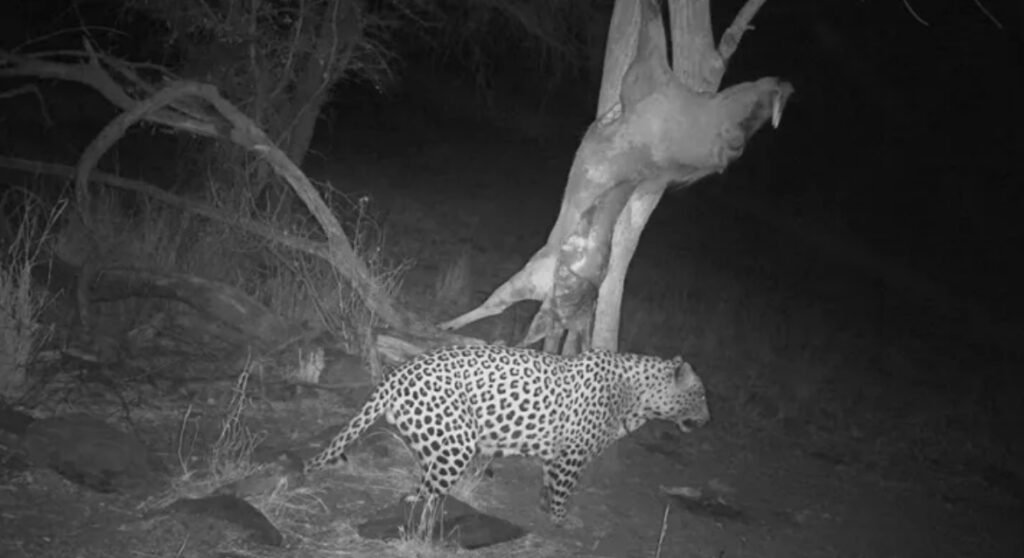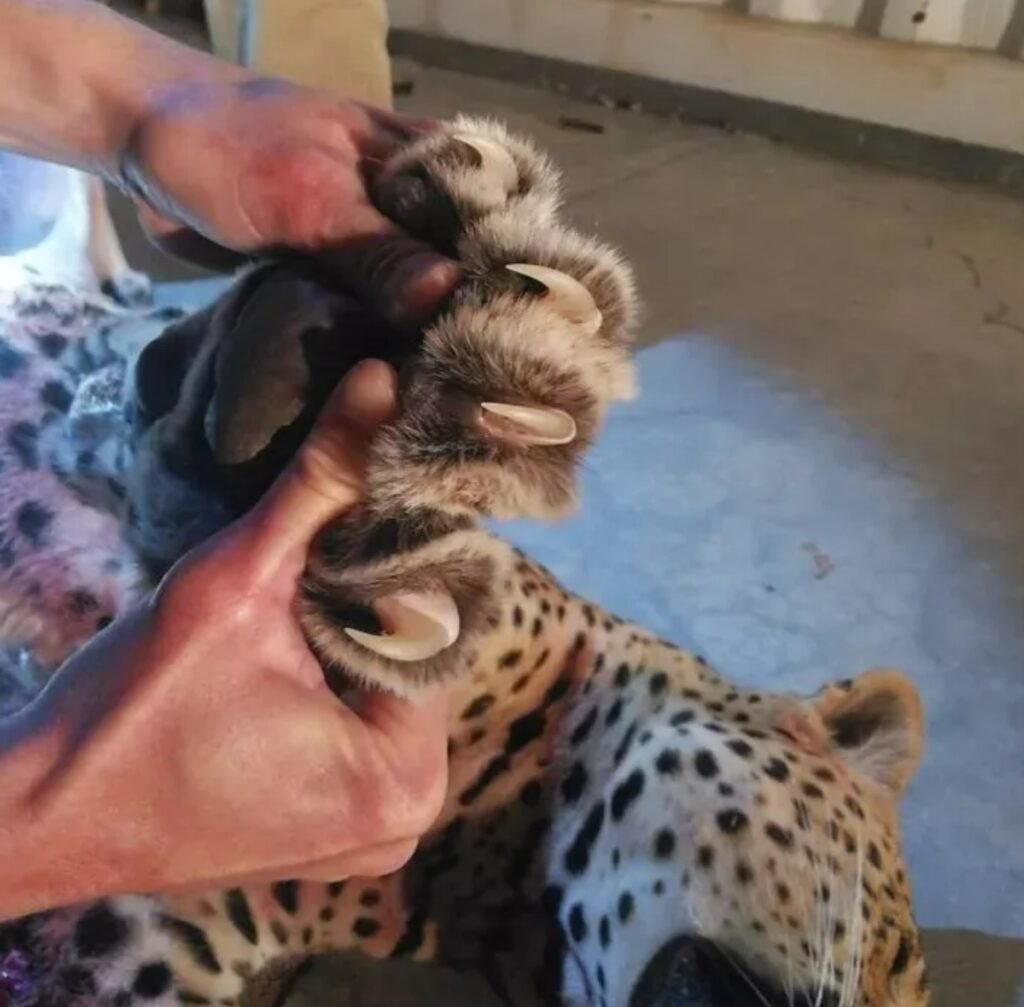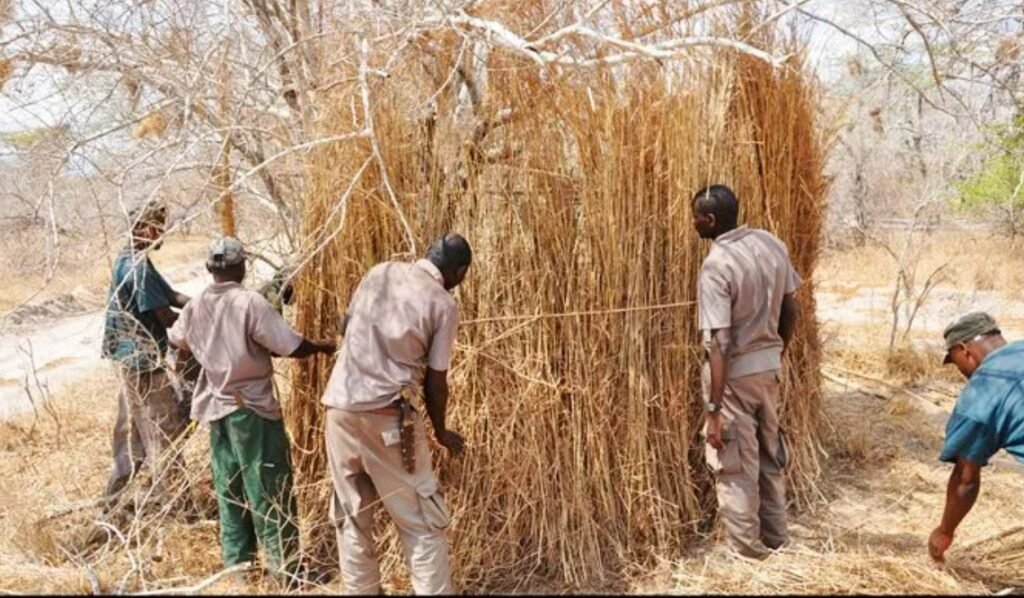Leopards are a sought-after trophy for hunters worldwide. Not only are they stunningly beautiful, but they’re also one of Africa’s Big Five, making them a prime target for many international hunters. Leopards can only be legally hunted in certain countries in Africa, and the permits for these areas are very limited each year. Recently, the number of permits has been tightening. If you’ve been dreaming of hunting a leopard but haven’t had the chance or are still waiting, it’s a good idea to plan your trip well in advance.

To hunt a leopard, you need to head to Africa, and only a few countries in Africa allow legal hunting of this animal. We recommend Namibia for leopard hunting. In recent years, most of our leopards have been hunted in Namibia. Below, I’ll provide you with a detailed overview of the leopard hunting arrangements in Namibia.
In most African countries where leopard hunting is permitted, the primary method is blind hunting. This approach is effective for targeting these elusive animals. Typically, when hunters book their trips, our local partners start baiting several sites with meat to lure leopards into the area. The hunting method involves using a blind set up within 100 meters of the bait. Hunters may spend the afternoon and night in the blind, potentially until the next morning. Since leopards get accustomed to visiting bait sites, it might take a few days, but it could also take several weeks. Hunters need patience and must refrain from smoking while on the hunt. In Namibia, temperatures in July can vary significantly, with daytime highs around 20°C (68°F) and nighttime lows around 0°C (32°F). Hunters should bring warm clothing to stay comfortable.






The blind used for hunting allows hunters to see the baited tree from approximately 100 meters away.


One common question hunters might have is how to shoot at night when visibility is poor. We provide hunters with a .300 WIN MAG German rifle equipped with a Zeiss scope that has a red dot, which makes aiming at night very clear. So, first off, the rifle and scope are top-notch! Additionally, there’s a small red light at the bait site. When the guide spots a leopard approaching, they will gradually turn on the red light. When the moment is right, the light will be fully on, allowing hunters to see the leopard clearly through the scope and prepare for the shot. Leopards are colorblind and can’t distinguish the red light.
Etosha National Park
Etosha National Park derives its name from its defining landscape feature—the Etosha Pan. The word “Etosha” comes from the Oshiwambo language, meaning “Great White Place” or “Place of Emptiness,” which perfectly describes the park’s salt pan landscape.
The pan covers approximately 4,800 square kilometers, forming a vast, flat expanse coated in a white salt crust. During the dry season, the dazzling white surface of the pan becomes even more prominent, creating a boundless and desolate appearance. This remarkable landscape has attracted explorers and early settlers, becoming the defining characteristic of the region and giving the park its name.
Let’s elaborate further on the diverse landscape features of Etosha National Park, which create a rich ecological environment supporting various wildlife species:
- Etosha Pan
This is the park’s most prominent feature, covering approximately 4,800 square kilometers, which is about a quarter of the park’s total area. It is typically dry, with a white salt crust. During the rainy season, shallow lakes form, attracting large numbers of waterbirds, especially flamingos.
The pan is a remnant of an ancient lake that dried up thousands of years ago due to climatic changes. - Bushland and Sparse Savannas
A large portion of the park is covered with bushland and open savannas, with drought-resistant shrubs, bushes, and grasslands.
Typical vegetation includes thorny bushes, acacia trees, and various grasses that serve as essential food sources for herbivores like zebras, wildebeests, and antelopes. - Dense Forests
In the northeastern and southwestern areas, more densely forested regions can be found, particularly near rivers and springs. These forests offer habitats for numerous bird species and arboreal animals.
Common tree species include the Ana Tree, Combretum, and Terminalia. - Springs and Waterholes
Etosha is dotted with natural springs and artificial waterholes. These water sources are crucial during the dry season, drawing large numbers of animals to drink. Waterholes are some of the best places for visitors to observe wildlife.
Some water sources are permanent, while others appear only during the rainy season. - Rocky Hills and Gravel Plains
In the western and southern parts of the park, there are low rocky hills and gravel plains. These elevated areas feature sparse vegetation and are composed of volcanic rocks, sandstone, and quartz sand. The ground is scattered with small shrubs and grasses. - Peatlands and Seasonal Wetlands
During the rainy season, certain areas of the park transform into peatlands and wetlands, especially near the salt pan. These seasonal wetlands attract large numbers of waterbirds and other wetland creatures.
The diversity in landscape is a key factor that sustains the vast range of wildlife species within Etosha National Park. These unique environments are what make Etosha one of the world’s most renowned wildlife conservation areas.
Etosha National Park has four main entry gates: Anderson’s Gate in the south, Von Lindequist Gate in the east, Galton Gate in the southwest, and King Nehale Lya Mpingana Gate in the north.
We entered through Galton Gate in the southwest, planning to leave two days later through Anderson Gate in the south. Upon arrival at Galton Gate before 11 a.m., it’s worth noting that reaching the park entrance doesn’t mean completing the day’s entire 450-kilometer journey—there is still some distance from the gate to the campsite.
Before entering, visitors must complete ticketing procedures. International tourists pay 150 Namibian dollars per day, with free entry for children under 16. Additionally, there’s a vehicle fee of 50 Namibian dollars per day. Due to favorable exchange rates, these fees are very affordable.
An important detail is the plastic bag check at the entrance. Each vehicle is allowed to carry no more than two plastic bags, reflecting Namibia’s dedication to environmental conservation and animal protection. Despite once being regarded as one of the poorest nations globally, Namibia’s high awareness of ecological protection is truly admirable.


Once inside the national park, the asphalt roads naturally disappeared, and the familiar Namibian dust returned. Nests of sociable weaver birds still hung from the trees, evoking a sense of familiarity layered upon previous experiences.
It wasn’t long before the animals started to appear. The first to greet us were zebras, though their numbers were modest. To satisfy everyone’s curiosity, our guide Wu decided to stop the vehicle, allowing us to take a closer look.


Next, we encountered elephants, and it was a family herd, though not too large in number. In Etosha National Park, stepping out of the vehicle at will is strictly prohibited. If nature calls, it must be taken care of at designated areas—meaning that relieving oneself anywhere else is also not allowed.
As a result, Wu repeatedly reminded everyone to drink less water to avoid unnecessary inconvenience.




Etosha National Park offers several camps for visitors, each with unique facilities and services tailored to different traveler preferences—whether adventurous campers or those seeking comfort. Staying overnight within the park saves time on re-entering and exiting, giving visitors more opportunities to engage with wildlife.
The main camps within Etosha National Park include:
- Okaukuejo Camp
- Halali Camp
- Namutoni Camp
- Dolomite Camp
- Olifantsrus Camp
- Onguma Camp
We planned to stay for two nights: the first night at Okaukuejo Camp and the second at Halali Camp, aiming to provide guests with diverse experiences.
Okaukuejo Camp, located near the southern entrance, serves as one of the main entry points to the park. The camp is famous for its waterhole, often regarded as the finest in the entire park. Open 24 hours a day, the waterhole offers exceptional wildlife viewing, particularly at night, with frequent sightings of elephants, rhinos, lions, and other animals coming to drink.
While excited about visiting the waterhole, we first needed to complete the check-in process. Despite having the keys in hand, finding our room turned out to be a bit of a challenge. The rooms were tucked away, requiring us to split up and search for a considerable amount of time before locating them.




